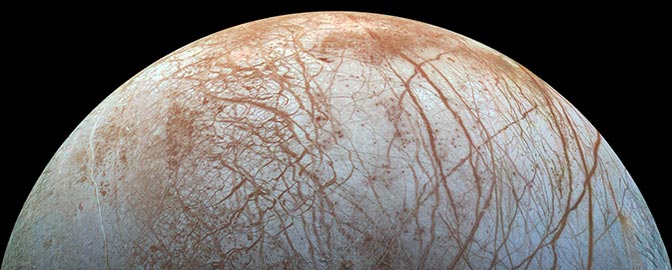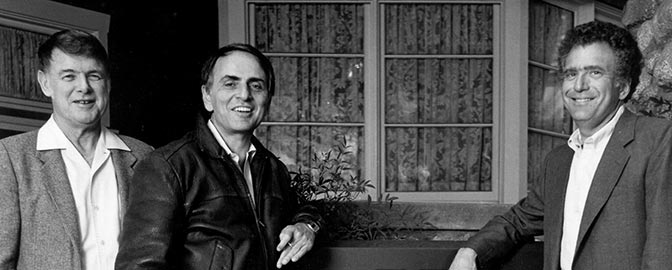Kate Howells • Feb 13, 2025
How space explorers could grow habitats from fungus
Blurring the line between biology and technology is a classic trope in science fiction. From the biomechanical Xenomorph ships in the “Alien” franchise to the formidable Borg in “Star Trek,” we often imagine advanced, terrifying alien civilizations capable of manipulating living things toward technological ends.
In yet another sci-fi trope, we Earthlings are increasingly turning into the technologically advanced beings we once feared. We’ve learned to harness nature’s processes to produce genetically modified organisms; we’re experimenting with incorporating living muscle tissue into robots; and, in one NASA-funded project, we are developing the ability to grow space habitats from fungi.

A project that sounds this much like science fiction is, of course, funded by NIAC.
NASA’s Innovative Advanced Concepts (NIAC) program is one of the agency’s most experimental and forward-thinking programs, in which ideas that sound far-out and futuristic are taken seriously. Other recent NIAC-funded projects are testing ideas like swarms of laser-sailing spacecraft, hibernation as a tool for long-duration human spaceflight, and shapeshifting robots that could explore Titan’s seas.
Lynn Rothschild, a senior research scientist at NASA’s Ames Research Center, leads one NIAC project that studies the potential of using mycelium — the root-like part of fungi — to grow habitats on Mars or other worlds.
Growing a home
The rationale behind Rothschild’s Mycotecture Off Planet project is that it is more efficient to create a habitat on another world than to transport all of the materials for a habitat from Earth.
“Right now, traditional habitat designs for Mars are like a turtle — carrying our homes with us on our backs — a reliable plan, but with huge energy costs,” Rothschild explained on a NASA page about the project. Launching a rocket bound for deep space is extraordinarily expensive, and every single pound counts. So a crewed mission that doesn’t need to bring a full habitat along with it would be able to bring other, more essential cargo instead.
This overall concept isn’t unique to Rothschild’s project. In situ resource utilization (the term for using what’s available at a destination) typically considers things like minerals, water ice, and regolith as potential construction materials. For example, China’s Chang'e 8 lunar mission, planned to launch in 2028, may test a 3D-printing technique to make bricks out of lunar regolith. NASA and ESA have also experimented with 3D printing using simulated lunar materials.

Mycotecture Off Planet differs from other projects in that this project aims not to build a habitat from local materials but to grow one using fungi.
Meet mycelium
The logic of growing a habitat makes sense, but the question that naturally arises is, why fungi?
When we think of fungi, we usually picture mushrooms — perhaps growing on a dewy forest floor or sliced up on a pizza. But mushrooms are actually just the flowering part of a fungus, like an apple is just one part of an apple tree. A mushroom that sprouts from the soil is usually just part of a larger organism, connected underground to other sprouting mushrooms by a network of root-like structures called mycelium.
Unlike mushrooms themselves, mycelium makes a versatile construction material because of how it grows. When introduced into an environment with limited nutrients, mycelium will grow outward in all directions until it finds food. It will then reinforce the links that connect it with that food and prune back those that didn’t lead anywhere useful. By introducing mycelium into a framework with nutrients placed strategically to guide its growth, you can coax it into growing into whatever shape you want.
While this may sound similar to growing vines up a trellis in your garden, the result is far more useful with mycelium because of its ability to weave itself into a dense, strong fabric. Once the mycelium has grown into the desired shape, it can be kept alive to enable self-repair or can be dried, which kills the organism itself but maintains its structure.
According to the book “Entangled Life” by biologist Merlin Sheldrake, mycelium can be grown into myriad useful forms, from shipping packaging to faux leather. Mycelium can also be grown into lightweight, durable bricks, which are extraordinarily useful as construction materials. “They are stronger than concrete when subjected to bending forces and resist compression better than wood framing,” Sheldrake explained. “They have a better insulation value than expanded polystyrene and can be grown in a matter of days into an unlimited number of forms.”

Mycelium’s potential may go beyond structural materials, too. The Mycotecture Off Planet team says that mycelium could also be used for water filtration, bioluminescent lighting, humidity regulation, and even self-repair.
A little help from some little friends
Growing construction materials here on Earth is already an advanced application of mycelium’s capabilities. Doing so on the Moon or Mars takes things to the next level.
The Mycotecture Off Planet project envisions astronauts bringing a basic, compact structure with them to their destination, or perhaps sending it on a cargo run before they arrive. This structure would be made of lightweight material implanted with dormant fungi. Upon arrival, the astronauts would unfold that structure and add water (perhaps sourced from local ice) and nutrients. The water would wake up the fungi, and the nutrients would direct the mycelium’s growth.
The tricky thing about doing this off-planet is the need to provide nutrients. Ecovative Design, a leading mycelial engineering firm, grows its materials using agricultural waste such as sawdust and corn stalks. Here on Earth, that’s a great way to reduce waste and grow sustainably. But agricultural byproducts would hardly be abundant in an off-world settlement, and bringing bulk nutrients from Earth to the Moon would be no more efficient than bringing fully grown bricks.
To make growing habitats in situ make sense, you need something that generates nutrients in situ as well.
One possible solution is cyanobacteria. These microorganisms use energy from the Sun to convert water and carbon dioxide into oxygen and complex organic compounds such as carbohydrates — a.k.a. food. Some types of cyanobacteria are extremophiles, meaning they thrive in environments that would be deadly to most other life forms. These are the perfect nutrient-making machines for mycotecture — taking resources already available on the Moon or Mars and turning them into food for fungi.
Grand designs
With all the ingredients figured out, it’s just a matter of putting them together. The Mycotecture Off Planet project envisions building a three-layered dome, with each layer containing a key ingredient.
The outermost layer would be made of water ice, which could be sourced from the local environment. That ice would come into contact with a second layer containing cyanobacteria, which would take that water, along with the outside light that shines through the icy layer, and convert it to oxygen for astronauts and nutrients for the final layer: the mycelium.
Those of us who are interested in discovering native life on Mars might balk at the idea of a habitat made of hardy microbes and fast-growing fungi. But Rothschild’s team has been mindful of contamination, and plans to implement planetary protection measures like genetically altering their fungi to be incapable of surviving outside the habitat.
While much of this grand vision is still theoretical, the Mycotecture Off Planet team is steadily working toward making it a reality. So far, they’ve grown a prototype lunar habitat — focusing first on the Moon to align with NASA’s Moon-to-Mars architecture — and tested their methods with various species of fungus. With a third round of funding awarded by NIAC in 2024, the project has a lot of room to keep growing.
The future is fungal
Space exploration demands innovation. That’s why so many technologies that we take for granted today have their roots in space engineering. Mycelial architecture is yet another innovation being explored for its potential in space but with many possible applications here on Earth.
The Mycotecture Off Planet team is already pursuing such terrestrial applications, with a focus on how mycelial structures could be used in situations where rapid and low-cost construction is needed, like in places with endemic poverty. DARPA, the U.S. military’s Defense Advanced Research Projects Agency, has also funded research into growing mycelial structures in conflict zones or humanitarian disaster sites, where creating shelters quickly could save lives.
Mycelium is useful for far more than construction, too. Someday, you may find yourself at the grocery store taking out your faux leather wallet to buy an imitation steak — both mycelium-based products in development right now — and heading to an art gallery to see some fungal sculptures. With so much potential to change our world and how we explore others, there’s little doubt that fungi are going to play a big part in our future.

Support our core enterprises
Your support powers our mission to explore worlds, find life, and defend Earth. You make all the difference when you make a gift. Give today!
Donate

 Explore Worlds
Explore Worlds Find Life
Find Life Defend Earth
Defend Earth

